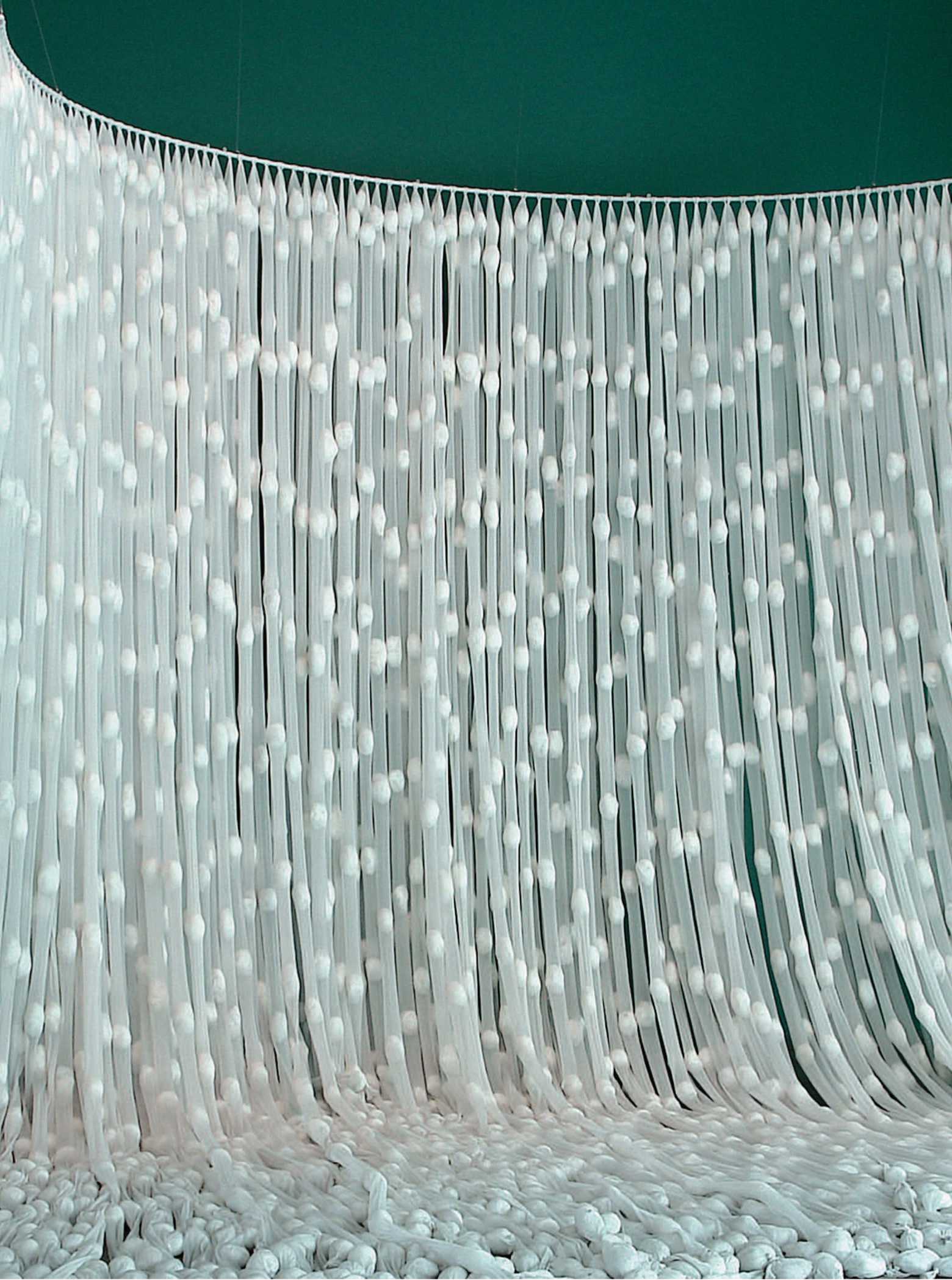Cascada
Marta Palau
Waterfall
In the late 1960s, Marta Palau abandoned the two-dimensionality of prints and oil paintings in favor of constructing environments and sculptures out of organic fibers (like henequen, corn husks, ixtle, wool fiber, and coir), which she proceeded to weave, combine, unravel, and graft without preconceived notions.
During the 1970s, she moved away from the format of the wall and instead presented her work as large-scale sculptures: heavy, matterist textile pieces that become powerful installations and invite the viewer to move around inside them.

Her work in this period successfully reclaimed textile work, historically associated with women’s handicrafts, and introduced it into the artistic sphere. These sexualized sculptures ambiguously express female corporeal forces through folds, creases, and hollows, like bodiless genitals.
Cascada is her most important installation from those years, and one of her most crucial works in general: a transmission of female desire that explores new sensory ways of depicting the body. Shown in 1978 at the Museo de Arte Moderno in Mexico City, this enormous installation intervened in the space through a torrent of translucent tubes of white nylon stockings containing small plush nodules. As a piece without any rigid structures at all, its mounting defied the museography of the era: anchored to the ceiling, it flows and overflows—much like an ejaculatory impulse—before falling to the floor. The artist herself remarked in an interview years later: “I see Cascada as a river of sperm.”
MARTA PALAU (1934)
Cascada, 1978
Waterfall
Installation. Nylon and textile fibers
Acquisition, 2005


